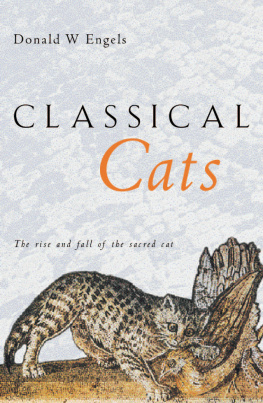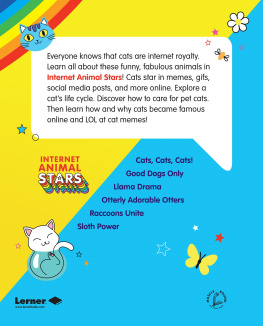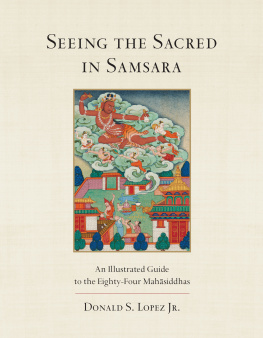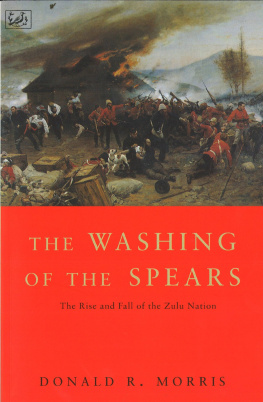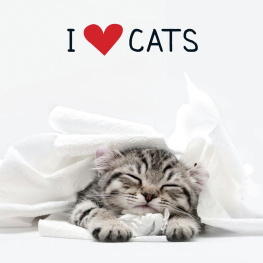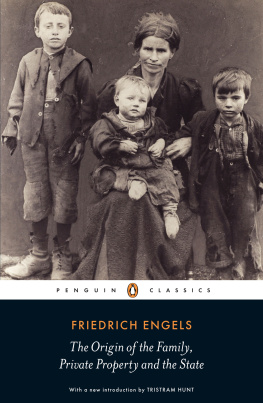Classical Cats
Today when we think of domestic cats, we recall the familiar hearthside companion and the mischievous playmate. It may be difficult to comprehend that in the past the animal has played a fundamental role in the development of European and Western civilisation. The human relationship to the cat has been important for most of the last four millennia.
Domesticated cats were the bulwark of Western societies' defence against rodents and the thirty five or so dangerous diseases they carry, including typhus and the bubonic plague. Cats were also important religious symbols for the goddess Artemis of the Greeks, Diana of the Romans and the Greco-Egyptian goddess, Isis. These divinities were worshipped mainly by women throughout Greece, and later in the Roman Empire. The cat has also been a crucial element in European folklore and folktales, the origins of which can be traced to Egypt, Greece and the Roman Empire.
In this beautifully illustrated book, Donald Engels charts the history and significance of the cat from ancient Egypt to the Middle Ages, exploring such phenomena as the worship of the Egyptian cat goddess Bastet, the infamous cat massacres and witch hunts of the thirteenth century, and the role of the cat in combating disease and starvation. Classical Cats presents a unique and entertaining view of the vicissitudes of the cat in history.
Donald Engels is Associate Professor of History at the University of Arkansas. He is the author of Alexander the Great and the Logistics of the Macedonian Army, and Roman Corinth: an alternative model for the classical city.
FOR MY MOTHER ALICE F. ENGELS
First published 1999
by Routledge
2 Park Square, Milton Park, Abingdon, Oxon OX14 4RN
Simultaneously published in the USA and Canada
by Routledge
711 Third Avenue, New York, NY 10017
First published in paperback 2001
Routledge is an imprint of the Taylor & Francis Group, an informa business
1999, 2001 Donald Engels
The right of Donald Engels to be identified as the Author of this Work has been asserted by him in accordance with the Copyright, Designs and Patents Act 1988.
Typeset in Garamond by Routledge
All rights reserved. No part of this book may be reprinted or reproduced or utilised in any form or by any electronic, mechanical, or other means, now known or hereafter invented, including photocopying and recording, or in any information storage or retrieval system, without permission in writing from the publishers.
British Library Cataloguing in Publication Data
A catalogue record for this book is available from the British Library.
Library of Congress Cataloging in Publication Data
Engels, Donald W.
Classical Cats: the rise and fall of the sacred cat/Donald Engels.
Includes bibliographical references and index.
1. Catshistory. 2. CatsReligious aspectsHistory. 3. CatsGreeceHistory. 4. CatsRomeHistory. I. Title. SF442.6.E56 1999
398.24'529752'0901dc21 99-25313
ISBN 0415-212510 (hbk)
ISBN 0-415-26162-7 (pbk)
The cat has played a significant although underrated role in history, especially in public health, religion, art, and folklore. First domesticated in Egypt some 4,000 years ago, the animal has been the subject of several works covering its early history there until about 500 BC. The next millennium, though, 500 BC to AD 500, which saw the introduction of the cat into western Europe as a significant component in European culture, has not received much attention. This neglect has caused many misunderstandings about the history of the animal, especially its role in religion, and its unfortunate persecution between 1200 and 1700. It is hoped that the present book will help clarify the role of the cat in European life.
This work focuses on the history of the cat during the classical era and is based on original sources: literary references; artistic portrayals; and archeological remains. To help understand this history, the Introduction will explore basic biological and behavioral aspects of the cat. This will enable us to better comprehend the animal's responses to the challenges it faced through the millennia in its new home, the continent of Europe. The first chapter will be devoted to Egypt, since many aspects of the animal in later European art, religion, and folklore originate in that culture. Indeed, Egypt is where the cat was first domesticated. Hence the term "classical" is also used in its broader meaning, that is, a work of art or music, or an idea that sets the standard that later eras try to emulate. In the same way, the cultures of Egypt, Greece, and Rome set the standard for future concepts of the animal. The final two chapters will trace this influence through medieval Europe into the modern era.
The first task was to track down the ancient evidence relating to cats. As befits the nature of the animal, they often had to be coaxed from obscure and difficult hiding places. Yet every archeological report, compendia of ancient art, and obscure ancient author, that yielded a cat was a minor triumph. Sometimes they were hiding in plain sight, on inlaid Mycenaean daggers, savoring the rich smells at a long-forgotten Etruscan banquet, and even sitting beneath the seat of kings.
The Thesaurus Linguae Graecae and its editor, Theodore Brunner, were an invaluable help in my search for ancient literary references. The TLG brought many of them out of hiding and into the open. I am indebted to Michael MacKinnon of the University of Alberta for his helpful assistance with the archeological remains from western Europe. I would also like to thank Al Wesolowski, and David Reese of the Field Museum of Natural History for their help collecting archeological evidence. Richard Beal of the Oriental Institute provided welcome assistance for the cats in ancient Mesopotamia. I also wish to thank the selfless staff of the University of Arkansas libraries who provided all possible assistance to me, especially Beth Juhl. The college of Arts and Sciences of the University of Arkansas was helpful in providing me with a leave of absence in 1992 to do the preliminary research. As always, my department of history provided a sane, rational work environment.
Many individuals helped me during the writing of this work. I wish to thank Catherine Lux, Evan and Anita Bukey. I also wish to thank the members of my department, Suzanne Smith, Kimberly Chenault, Willard Gatewood, David Chappell, and Elliott West. Thanks are owed to Gary Shepard, Elias and Julie Saad, Robert Whalen, Deborah Peterson, Mary Hilt, Diana Delia, LeRoy and Helen Middleworth, Janie Penn, Julia Sheehan, and Errol Morris for their help and encouragement. Lynda Coon and John Arnold provided help for the medieval era
I have also been assisted by various cats, past and present, that my family and I have owned over the last forty years, some of whom will appear in the notes on the following pages. Observing their behavior and interaction with other animals and humans has provided many insights. I have learned much from all of them.
I will use the names of the Egyptian pharaohs and the dates of their reigns given in Peter A. Clayton, Chronicle of the Pharaohs, New York, Thames and Hudson, 1994. For the citation of classical Greek sources, I will use those given in the Thesaurus Linguae Graecae. It is unfortunate that so many differences remain in the textual citations of Greek literature. Therefore common, alternative numerical citations will be added when needed in parentheses after the main citation.


